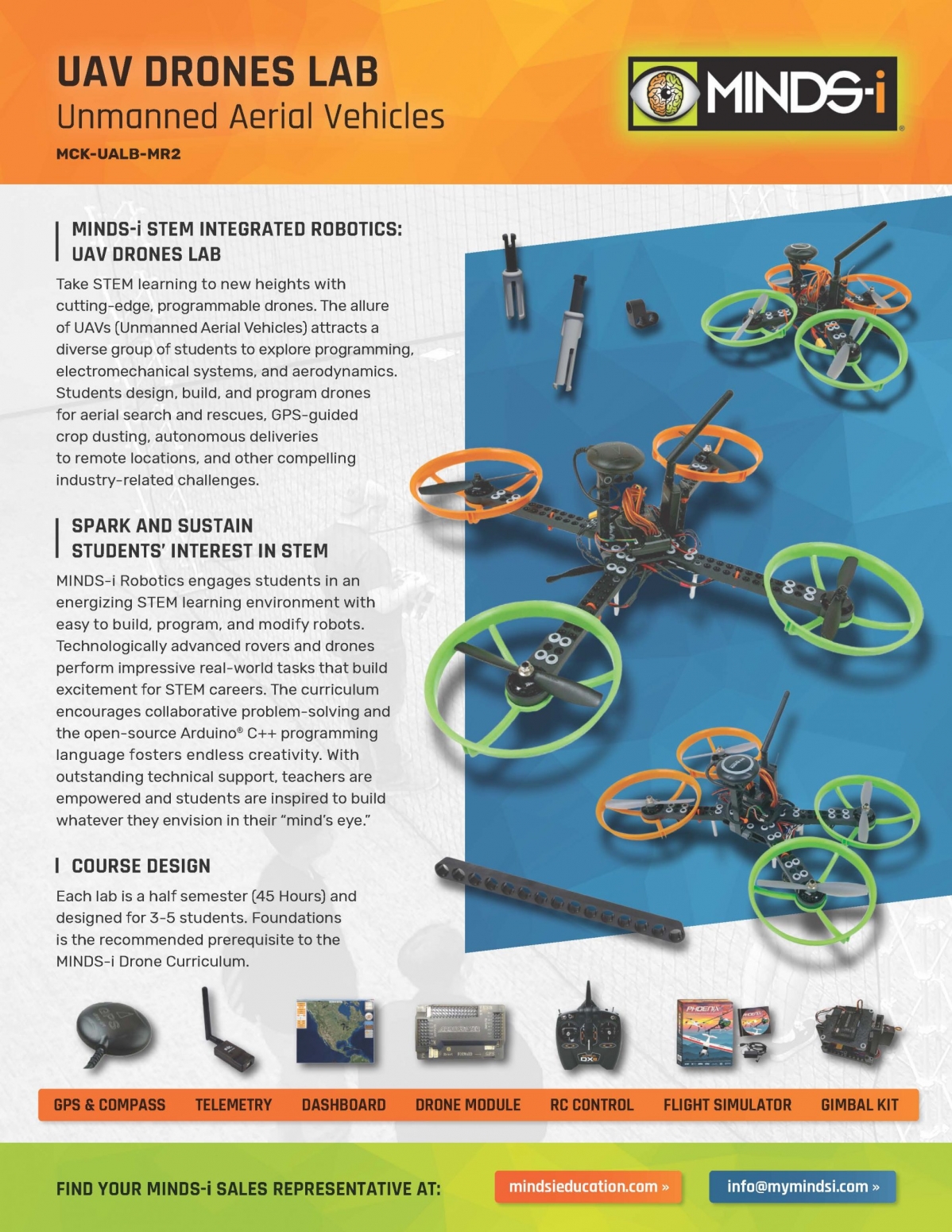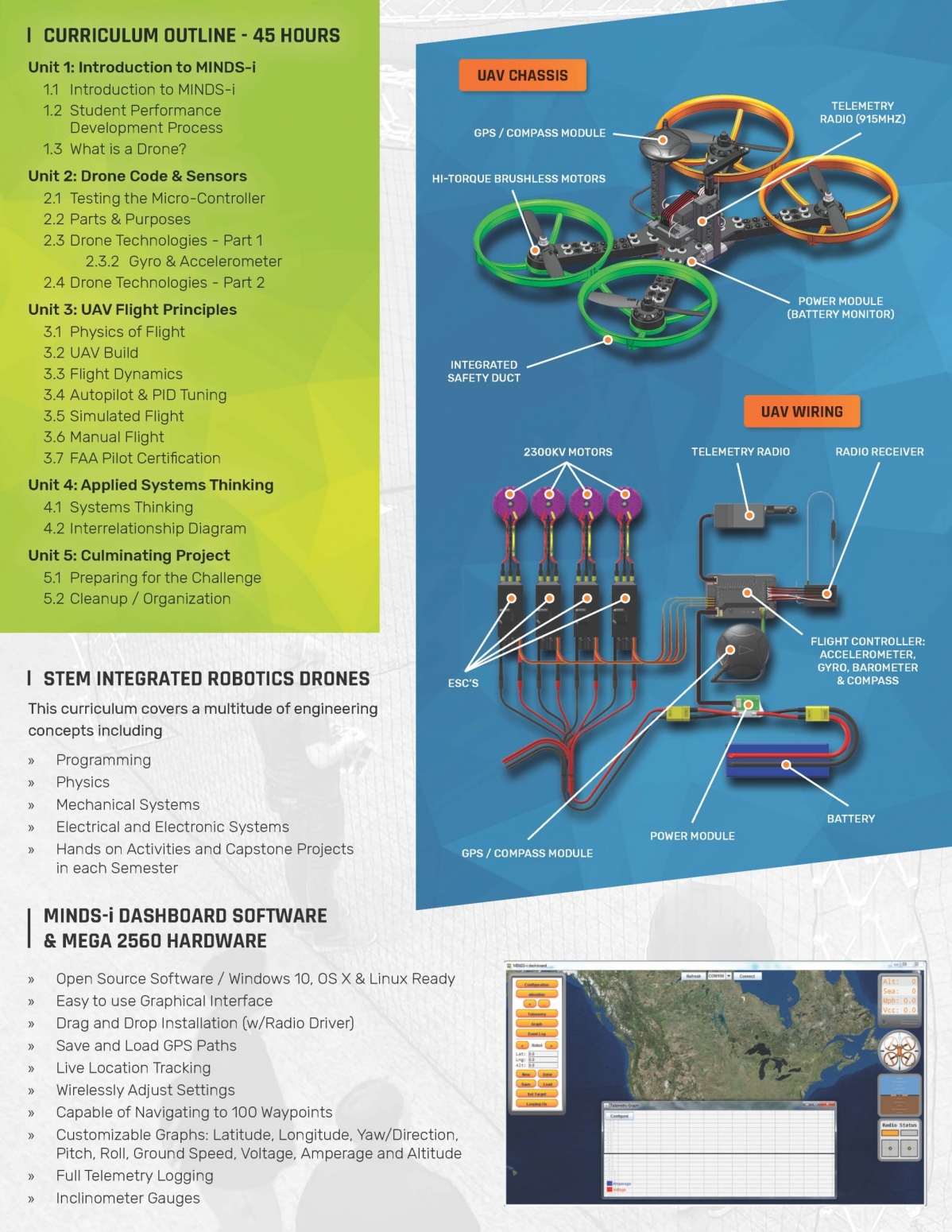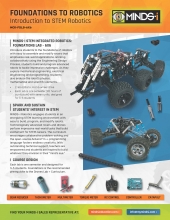STEM Robotics Drones LAB UAV (45 Hour)
STEM Integrated Robotics
Take STEM learning to new heights with cutting-edge, programmable drones. The allure of UAVs (Unmanned Aerial Vehicles) attracts a diverse group of students to explore programming, electromechanical systems, and aerodynamics. Students design, build, and program drones for aerial search and rescues, GPS-guided crop dusting, autonomous deliveries to remote locations, and other compelling industry-related challenges.
Spark and Sustain Students' Interest in STEM
MINDS-i Robotics engages students in an energizing STEM learning environment with easy to build, program, and modify robots. Technologically advanced rovers and drones perform impressive real-world tasks that build excitement for STEM careers. The curriculum encourages collaborative problem-solving and the open-source Arduino® C++ programming language fosters endless creativity. With outstanding technical support, teachers are empowered and students are inspired to build whatever they envision in their “mind’s eye.”
Course Design
Each lab is a half-semester (45 Hours) and designed for 3-5 students. Foundations is the recommended prerequisite to the MINDS-i Drone Curriculum.
Contents
Each Lab is designed to support a small group of students (3 to 5) for one semester.
- Qty: 2 UAV Kits
- Includes GPS & Telemetry Kit
- Qty: 2 RC Transmitter with Receiver
- Qty: 6 Extra SF Propellers
- Qty: 6 Extra SFP Propellers
- Qty: 1 Gimbal Kit
- Qty: 3 Safety Glasses
- Qty: 2 Extra MINDS-i Tool
- Qty: 1 3/32 Hex Driver
- Qty: 1 LiPoly Battery Charger
- Qty: 1 LiPoly Battery Charging Bag
- Qty: 1 Flight Simulator
- Qty: 1 PID Test Rack
- Qty: 1 Storage Bins






